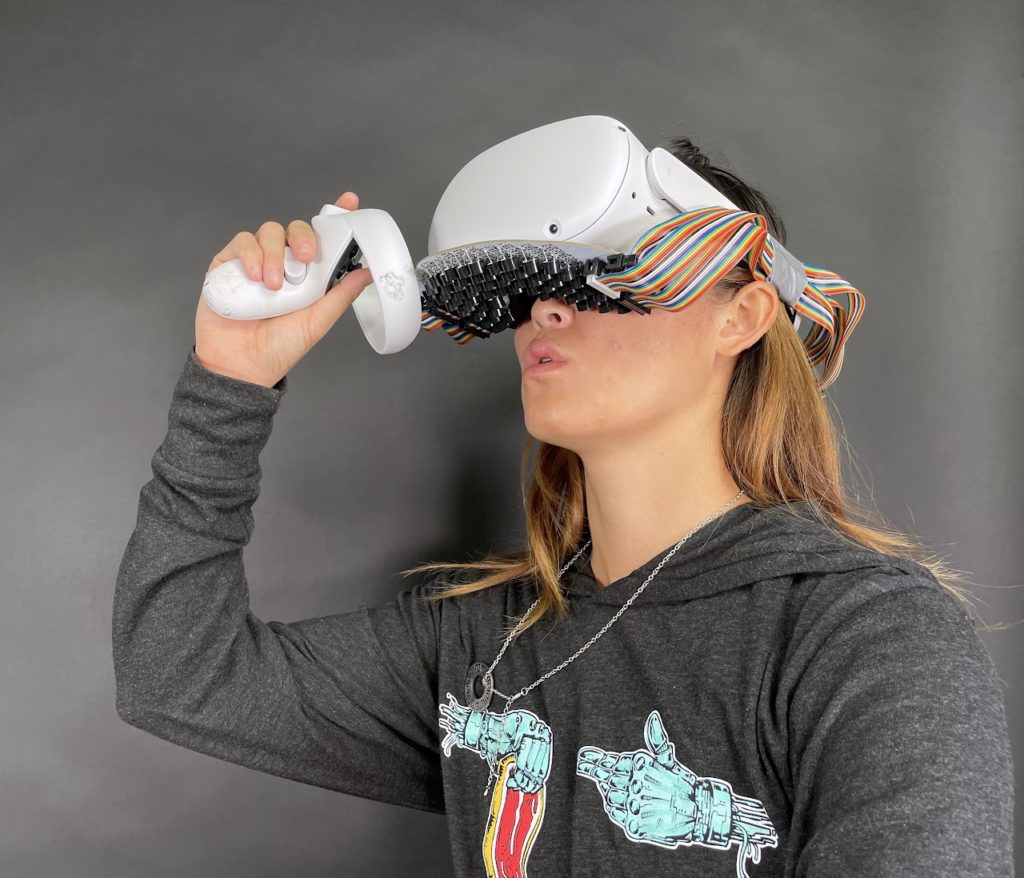— May 2nd, 2022

Virtual reality technology is advancing quickly and today’s headsets provide a very immersive visual and auditory experience. But they neglect the other senses. Haptic feedback, via vibration motors in controllers, is the only common technique for imparting a sense of touch. While haptic vests and other experimental devices exist, consumers continue to show that they have little interest in wearing bulky equipment. To enhance feedback in VR, a team from Carnegie Mellon’s Future Interfaces Group built an ultrasonic array that stimulates the user’s mouth.
The mouth may seem like an odd choice, but it is more sensitive to touch than anywhere else aside from hands. It is also close to the eyes, which users are already accustomed to covering with VR goggles. By targeting the mouth, the researchers were able to create high-fidelity feedback from the same headset form factor that VR users already wear. The feedback comes from an array of many ultrasonic transducers that project soundwaves outside the range of human hearing. When those soundwaves reach the lips, teeth, or tongue, they produce a small physical sensation.

The team controlled the ultrasonic transducer array through an Arduino Mega 2560 board. It connects via USB to a laptop running Unity to render the virtual reality world. When something happens within that virtual world, such as the user taking a sip of coffee, Unity tells the Arduino to activate the relevant transducers. It can simulate a range of different sensations by controlling both the frequency of transducers and the pattern in which they activate. The prototype transducer array fits onto the bottom of a standard VR headset and doesn’t cover the user’s mouth, which results in a comfortable experience that consumers might accept.
Image credit: Carnegie Mellon University Future Interfaces Group
Website: LINK

